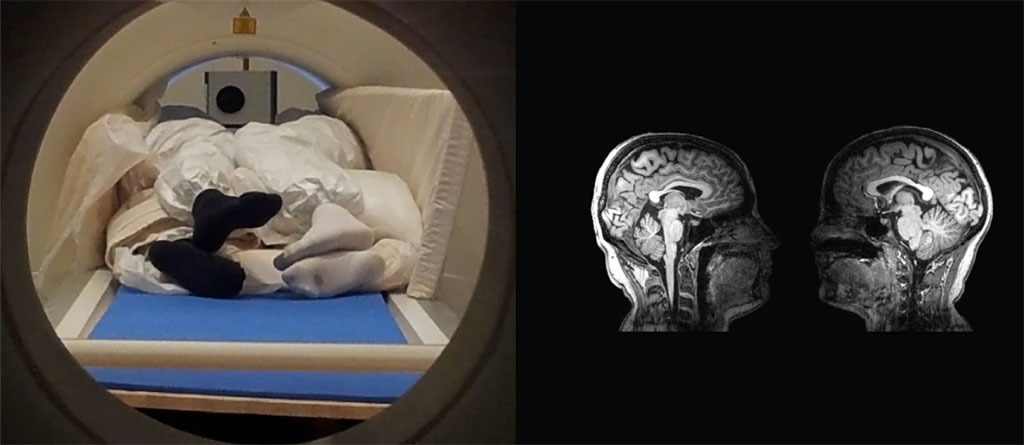Couples MRI Reveals How the Brain Perceives Touch
By MedImaging International staff writers
Posted on 14 May 2020
A new study shows how simultaneous magnetic resonance imaging (MRI) from two people together can reveal social interaction effects on the brain.Posted on 14 May 2020
Researchers at Aalto University (Espoo, Finland) and the University of Turku (UTU; Finland) conducted a proof-of-concept experimental study involving 10 subject pairs who underwent blood oxygenation dependent (BOLD) imaging of brain activity while interacting with each other inside the bore of a single MRI scanner. To do so, the researchers developed a custom 16-channel two-helmet coil with two separate receiver-coil pairs to provide whole-brain coverage in a shared physical space and realistic face-to-face contact.

Image: Dyad MRI studies can reveal the effects of social interaction on the brain (Photo courtesy of Aalto University)
During the experiment, which lasted for 45 minutes inside the MRI scanner, the study subjects took turns tapping each other’s lip versus observing and feeling the taps timed by auditory instructions. Networks of sensorimotor brain areas were engaged alternatingly in the subjects during executing motor actions, as well as observing and feeling them; the responses were clearly distinguishable from the auditory responses occurring similarly in both participants. The study was published on April 28, 2020, in Frontiers in Psychiatry.
“This is an excellent start for the study of natural interaction. People don't just react to external stimuli, but adjust their actions moment-by-moment based on what they expect to happen next,” said study co-author Professor emeritus Riitta Hari, MD, PhD, of Aalto University. “For example, during a conversation or problem solving, people's brain functions become flexibly linked with each other. However, we cannot understand the brain basis of real-time social interaction if we cannot simultaneously scan the brain functions of both persons involved in social interaction.”
"During social interaction, people's brains are literally synchronized. The associated mental imitation of other people's movements is probably one of the basic mechanisms of social interaction,” said Professor Lauri Nummenmaa, MD, PhD, of the UTU PET Center. “The new technology now developed will provide totally new opportunities for studying the brain mechanisms of social interaction.”
Most social interactions, such as verbal and nonverbal communication, occur in dyads or groups, where people constantly strive to predict, understand, and influence each other. During the interaction, sensory, cognitive, and emotional information is constantly remapped. Thus, the interlocutors’ minds are intertwined into a shared system that facilitates reciprocation, as well as anticipation of the other person’s acts.
Related Links:
Aalto University
University of Turku














